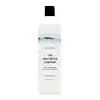What's inside
What's inside
 Key Ingredients
Key Ingredients

 Benefits
Benefits

 Concerns
Concerns

 Ingredients Side-by-side
Ingredients Side-by-side

Water
Skin ConditioningCetyl Alcohol
EmollientBehentrimonium Chloride
PreservativeStearalkonium Chloride
PreservativeStearyl Alcohol
EmollientGlycerin
HumectantCocos Nucifera Oil
MaskingPropanediol
SolventCoco-Caprylate
EmollientIsopropyl Alcohol
SolventGuar Hydroxypropyltrimonium Chloride
Skin ConditioningHydrolyzed Rice Protein
Skin ConditioningPanthenol
Skin ConditioningTocopheryl Acetate
AntioxidantCitric Acid
BufferingPhenoxyethanol
PreservativeEthylhexylglycerin
Skin ConditioningWater, Cetyl Alcohol, Behentrimonium Chloride, Stearalkonium Chloride, Stearyl Alcohol, Glycerin, Cocos Nucifera Oil, Propanediol, Coco-Caprylate, Isopropyl Alcohol, Guar Hydroxypropyltrimonium Chloride, Hydrolyzed Rice Protein, Panthenol, Tocopheryl Acetate, Citric Acid, Phenoxyethanol, Ethylhexylglycerin
Water
Skin ConditioningIsopropyl Palmitate
EmollientStearyl Alcohol
EmollientPropanediol
SolventIsopentyldiol
HumectantBehentrimonium Chloride
PreservativeTocopherol
AntioxidantTocopheryl Acetate
AntioxidantSh-Oligopeptide-78
Alteromonas Ferment Extract
Skin ConditioningPrunus Amygdalus Dulcis Oil
Skin ConditioningSimmondsia Chinensis Seed Oil
EmollientPhospholipids
Skin ConditioningJojoba Esters
EmollientCalcium Gluconate
HumectantHydroxypropyl Guar Hydroxypropyltrimonium Chloride
Ceramide NP
Skin ConditioningPhytosteryl/Isostearyl/Cetyl/Stearyl/Behenyl Dimer Dilinoleate
Skin ConditioningPolyquaternium-16
Stearalkonium Chloride
PreservativeIsopropyl Alcohol
SolventButylene Glycol
HumectantGluconolactone
Skin ConditioningPhenoxyethanol
PreservativeSodium Benzoate
MaskingCitric Acid
BufferingSodium Hydroxide
BufferingParfum
MaskingHydroxycitronellal
PerfumingWater, Isopropyl Palmitate, Stearyl Alcohol, Propanediol, Isopentyldiol, Behentrimonium Chloride, Tocopherol, Tocopheryl Acetate, Sh-Oligopeptide-78, Alteromonas Ferment Extract, Prunus Amygdalus Dulcis Oil, Simmondsia Chinensis Seed Oil, Phospholipids, Jojoba Esters, Calcium Gluconate, Hydroxypropyl Guar Hydroxypropyltrimonium Chloride, Ceramide NP, Phytosteryl/Isostearyl/Cetyl/Stearyl/Behenyl Dimer Dilinoleate, Polyquaternium-16, Stearalkonium Chloride, Isopropyl Alcohol, Butylene Glycol, Gluconolactone, Phenoxyethanol, Sodium Benzoate, Citric Acid, Sodium Hydroxide, Parfum, Hydroxycitronellal
 Reviews
Reviews

Ingredients Explained
These ingredients are found in both products.
Ingredients higher up in an ingredient list are typically present in a larger amount.
This ingredient is a preservative and often used for it's anti-static properties. You'll most likely see this ingredient in hair conditioners.
It does not cause irritation or sensitization in leave-on products at 1-5%.
Citric Acid is an alpha hydroxy acid (AHA) naturally found in citrus fruits like oranges, lemons, and limes.
Like other AHAs, citric acid can exfoliate skin by breaking down the bonds that hold dead skin cells together. This helps reveal smoother and brighter skin underneath.
However, this exfoliating effect only happens at high concentrations (20%) which can be hard to find in cosmetic products.
Due to this, citric acid is usually included in small amounts as a pH adjuster. This helps keep products slightly more acidic and compatible with skin's natural pH.
In skincare formulas, citric acid can:
While it can provide some skin benefits, research shows lactic acid and glycolic acid are generally more effective and less irritating exfoliants.
Most citric acid used in skincare today is made by fermenting sugars (usually from molasses). This synthetic version is identical to the natural citrus form but easier to stabilize and use in formulations.
Read more about some other popular AHA's here:
Learn more about Citric AcidIsopropyl Alcohol is more commonly known as rubbing alcohol. It is most commonly used as a solvent, meaning it helps other ingredients dissolve.
This ingredient is an astringent alcohol. Astringent alcohols may also irritate skin as they high amounts may strip away your skin's natural oils.
Other types of astringent alcohols include:
According to the National Rosacea Society based in the US, you should be mindful of products with these alcohols in the top half of ingredients.
Any type of sanitizing product will have high amounts of alcohol to help kill bacteria and viruses.
Learn more about Isopropyl AlcoholPhenoxyethanol is a preservative that has germicide, antimicrobial, and aromatic properties. Studies show that phenoxyethanol can prevent microbial growth. By itself, it has a scent that is similar to that of a rose.
It's often used in formulations along with Caprylyl Glycol to preserve the shelf life of products.
Propanediol is an all-star ingredient. It softens, hydrates, and smooths the skin.
It’s often used to:
Propanediol is not likely to cause sensitivity and considered safe to use. It is derived from corn or petroleum with a clear color and no scent.
Learn more about PropanediolStearalkonium Chloride is a preservative.
Stearyl Alcohol is a type of fatty alcohol from stearic acid. It is a white, waxy compound used to emulsify ingredients.
Fatty Alcohols are most often used as an emollient or to thicken a product. Emollients help soothe and hydrate the skin by trapping moisture.
They are usually derived from natural fats and oils and therefore do not have the same drying or irritating effect as solvent alcohols. FDA allows products labeled "alcohol-free" to have fatty alcohols.
Learn more about Stearyl AlcoholTocopheryl Acetate is AKA Vitamin E. It is an antioxidant and protects your skin from free radicals. Free radicals damage the skin by breaking down collagen.
One study found using Tocopheryl Acetate with Vitamin C decreased the number of sunburned cells.
Tocopheryl Acetate is commonly found in both skincare and dietary supplements.
Learn more about Tocopheryl AcetateWater. It's the most common cosmetic ingredient of all. You'll usually see it at the top of ingredient lists, meaning that it makes up the largest part of the product.
So why is it so popular? Water most often acts as a solvent - this means that it helps dissolve other ingredients into the formulation.
You'll also recognize water as that liquid we all need to stay alive. If you see this, drink a glass of water. Stay hydrated!
Learn more about Water